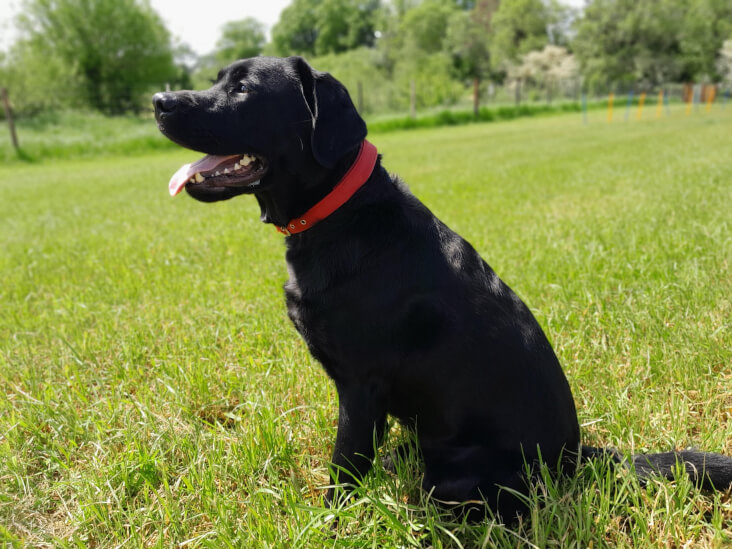If you’ve wondered how dogs see the world you’re not alone.
For years scientist have been trying to understand if dogs can see colours. And if they can see more or less than humans.
That leads us to the first popular myth you will want to dispel – dogs are not colour blind. For decades and decades nearly every magazine article would say that dogs are.
As technology has grown over the years we have come to understand more about how they see. Knowing this information is important, because as you’ll soon see, you can help them navigate the world better by choosing the right coloured toys and equipment.
What Colours Can Dogs See?
Dogs have two cones in their eyes (humans have three), the one they are missing is that which picks up red and green colours. This means they also can’t see shades like pink, purple, and orange.
With the two cones they have most dogs see shades of blue, yellow and brown, as well as black, greys and white.
In the book Perfect Puppy in 7 Days: How to Start Your Puppy Off Right they outline the difference in their visual spectrum to us….

And how this might look in reality when looking at a colourful object…

Another thing to note, which is made clear in the photos, is that the shades that dogs can see will vary. Due to factors mentioned telling the difference between shades can also be hard for many dogs.
What this all means is that dogs not only miss out completely on colours we can see, but because of the structure of the cones…. They actually see different colours differently!
For example a red toy, it will appear brown, and an orange toy (a mix of red and yellow), looks to them like a brownish yellow. This means colours that they find hard to see can make it difficult for a dog to play with – like playing fetch on green grass.
The above examples shows how it might be helpful to your pup to buy them toys that are bright yellow or blue to help them see and play better with.







Comments